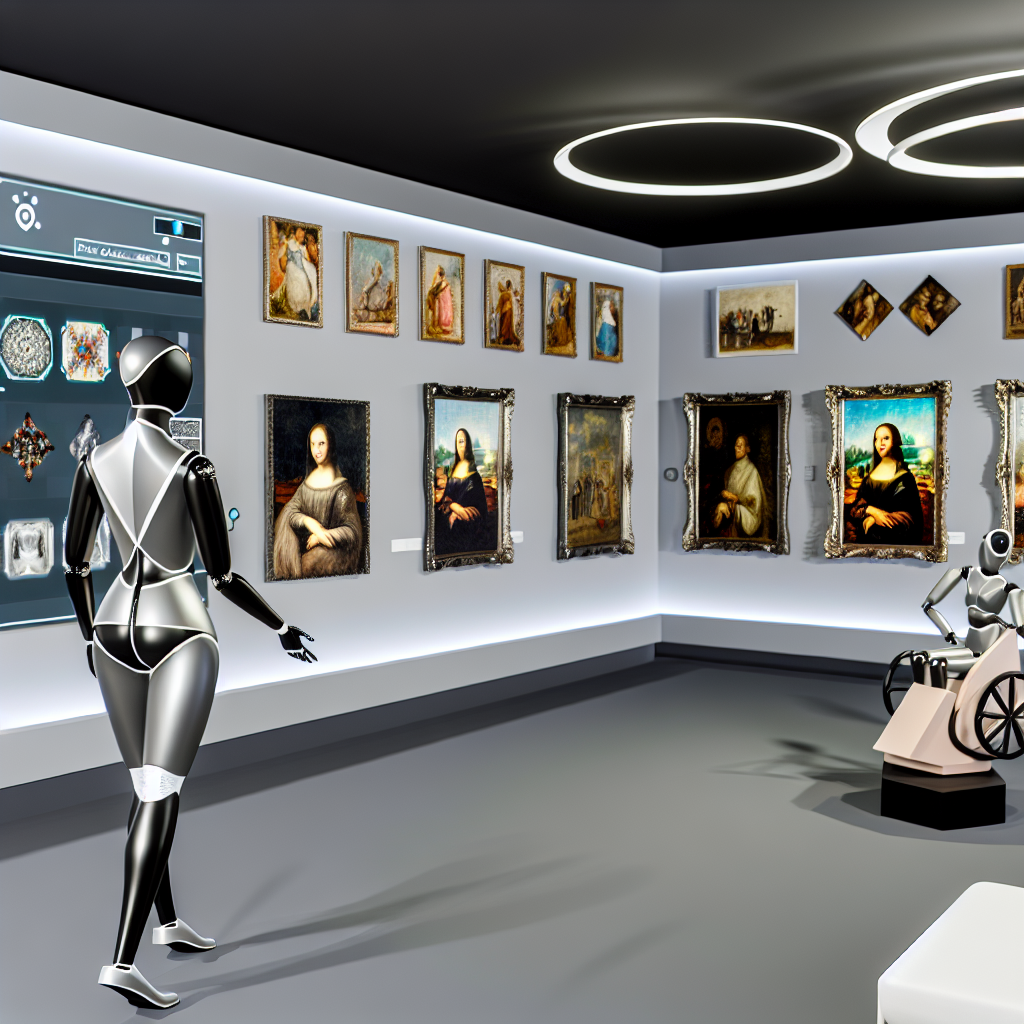AI Art Curation: Building Premium Digital Collections
The Evolution of AI in Art Curation: A New Era for Digital Collectors
In the age of technological sophistication, the art world is experiencing an unprecedented transformation. Artificial Intelligence (AI) has not only infiltrated the creative process but is now playing a key role in curating, valuing, and assembling premium digital art collections. Art curation, once an exclusive skill honed by historians, collectors, and curators, is being revolutionized by AI algorithms capable of analyzing patterns, artist trajectories, and historical data to determine value and rarity.
For luxury collectors and digital connoisseurs, AI-assisted curation is redefining how high-end digital art is discovered, acquired, and appreciated. With the rise of blockchain technology and NFTs (Non-Fungible Tokens), digital collections are no longer mere visual representations; they have become prestige assets hunted by elite investors, museums, and visionaries. AI’s ability to assess and recommend art based on bespoke aesthetic preferences enables collectors to build portfolios aligned with their luxury lifestyles.
Moreover, AI’s deep learning capabilities allow it to examine thousands of art pieces in real-time, identifying movements, influences, and niche trends that even the most seasoned connoisseurs might overlook. Whether it’s predicting the next blue-chip digital artist or sourcing exclusive generative artworks, AI-driven platforms offer a high level of precision and personalization. The implications for collectors who prioritize rarity, sophistication, and innovation are incredible, paving the way for entirely new levels of digital art investment.
Integrating AI into premium art curation is not just a matter of convenience—it is a strategic advantage. Collectors seeking an edge in the competitive world of high-value digital art can leverage these technologies to refine their acquisitions, ensuring access to rare, cutting-edge pieces before they surface in the mainstream. With AI, elite collectors are no longer bound by traditional curation methods, making the digital space equally as luxurious and exclusive as the rarest private galleries. As the art world continues to evolve, AI-fueled curation is set to become a defining factor in the next-generation luxury art market.
The Science Behind AI-Driven Art Curation: Data, Aesthetics, and Valuation
The use of AI in art curation is not just a conceptual novelty—it is deeply rooted in data science, machine learning, and computational aesthetics. Research into AI’s role in the art world has demonstrated its ability to both democratize and enhance the valuation and recommendation processes, ultimately benefitting collectors and investors.
A key study published in Proceedings of the National Academy of Sciences revealed that machine learning models can accurately predict aesthetic preferences by analyzing human responses to various art styles. By studying behavioral patterns, these AI-driven algorithms rank artworks based on desirability, emotional engagement, and perceptual harmony—a major shift from the traditionally subjective nature of art evaluation ([PNAS Study](https://www.pnas.org/)).
Additionally, researchers at Rutgers University developed an AI art evaluation framework called AICAN, which has proven its ability to identify emerging artistic trends and even generate original compositions that mimic historical art movements ([AICAN by Rutgers](https://sites.rutgers.edu/art-ai-lab/aican/)). Luxury collectors utilizing such AI tools gain a crucial strategic edge by acquiring pieces before they reach peak market value. This concept is already being implemented within digital auction houses and NFT marketplaces, where AI scrapes auction results, buyer engagement data, and algorithmic aesthetic scores to highlight high-potential collectibles.
Neurological research also highlights the psychological effects of AI-generated art and its curation. A study from University College London explored how artificial intelligence could create high-engagement art pieces by tapping into subconscious emotional triggers ([UCL AI Research](https://www.ucl.ac.uk/news/)). The luxury market benefits from this data-driven approach by enabling creations that evoke stronger emotional and intellectual connections—elements that define high-value art in traditional and digital forms.
AI is also transforming authentication and fraud prevention, crucial factors in luxury collecting. With sophisticated machine-learning models, forgeries can be detected with near-perfect accuracy, using macro and micro analysis techniques unseen to the human eye. Considering the volatility of the digital art market, such innovations increase collector confidence in high-end acquisitions and provide a fortified framework for long-term valuation.
The Future of AI in Luxury Art Curation: Staying Ahead of the Curve
AI-powered curation is not just a passing trend; it is the future of premium digital art acquisition. For collectors who embrace technology, AI presents a roadmap to a more refined, intelligent, and personalized art selection process. As artificial intelligence continues to learn from collector preferences and market fluctuations, those who leverage these tools will be at the forefront of the high-end art scene.
Luxury is defined by exclusivity, precision, and foresight—qualities now being perfected with AI-driven art selection. Whether it’s uncovering hidden masterpieces or investing in the next digital art pioneer, the integration of AI ensures that collectors remain ahead of the curve, curating portfolios that are as opulent and distinctive as their lavish lifestyles.
**Summary:**
The article explores the transformative role of Artificial Intelligence (AI) in the world of art curation, highlighting how it is revolutionizing the way premium digital art collections are discovered, acquired, and appreciated by luxury collectors. It delves into the science behind AI-driven art curation, discussing the data-driven approaches, computational aesthetics, and technological advancements that are redefining the luxury art market. The piece also looks ahead to the future, where AI-powered curation is set to become a defining factor in the next-generation of digital art investment and collection building.
**References:**
– *PNAS Study on AI and Aesthetic Preferences*: [https://www.pnas.org/](https://www.pnas.org/)
– *AICAN by Rutgers University*: [https://sites.rutgers.edu/art-ai-lab/aican/](https://sites.rutgers.edu/art-ai-lab/aican/)
– *UCL AI Research on Emotional Engagement in Art*: [https://www.ucl.ac.uk/news/](https://www.ucl.ac.uk/news/)

Dominic E. is a passionate filmmaker navigating the exciting intersection of art and science. By day, he delves into the complexities of the human body as a full-time medical writer, meticulously translating intricate medical concepts into accessible and engaging narratives. By night, he explores the boundless realm of cinematic storytelling, crafting narratives that evoke emotion and challenge perspectives. Film Student and Full-time Medical Writer for ContentVendor.com




